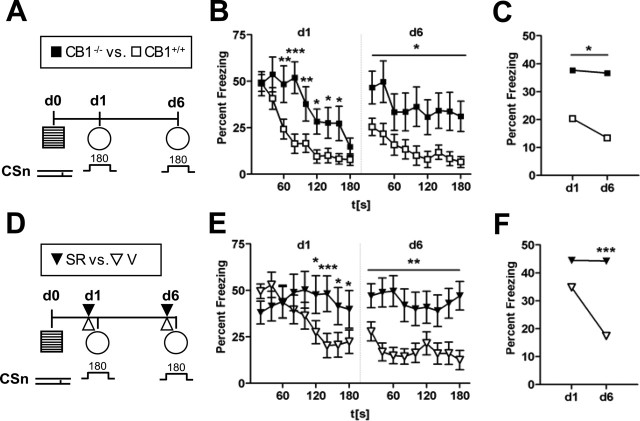Figure 3.
CB1 deficiency impairs both within-session and long-term adaptation of sensitized fear. A, D, Mice with genetic ablation of CB1 (A; CB1−/−, n = 10; CB1+/+, n = 15; included in Fig. 1B) and inbred mice with acute pharmacological blockade of CB1 before tone presentation [D; 3 mg/kg SR141716A (SR), n = 17; vehicle (V), n = 17] were exposed to a 180 s tone not only 1 d but also 6 d after sensitization. B, E, Genetic ablation (B) and pharmacological inactivation (E) of CB1 caused similar impairments in the decrease in sensitized fear during the first tone presentation. These impairments became even more pronounced during the second tone presentations (mean ± SEM). C, F, Both genetic ablation (C) and acute pharmacological blockade (F) of CB1 impaired the long-term decrease in the freezing response from the first to the second tone presentation (mean). Data were normalized either to 20 s observation intervals (B, D) or to the entire 180 s observation period (C, F). ∗p < 0.05; ∗∗p < 0.01; ∗∗∗p < 0.001. CSn, Tone after sensitization procedure; ▪, CB1−/−; □, CB1+/+; ▾, C57BL/6N mice treated with 3 mg/kg SR141716A; ▿, C57BL/6N mice treated with vehicle; d0, day 0; d1, day 1; d6, day 6.

